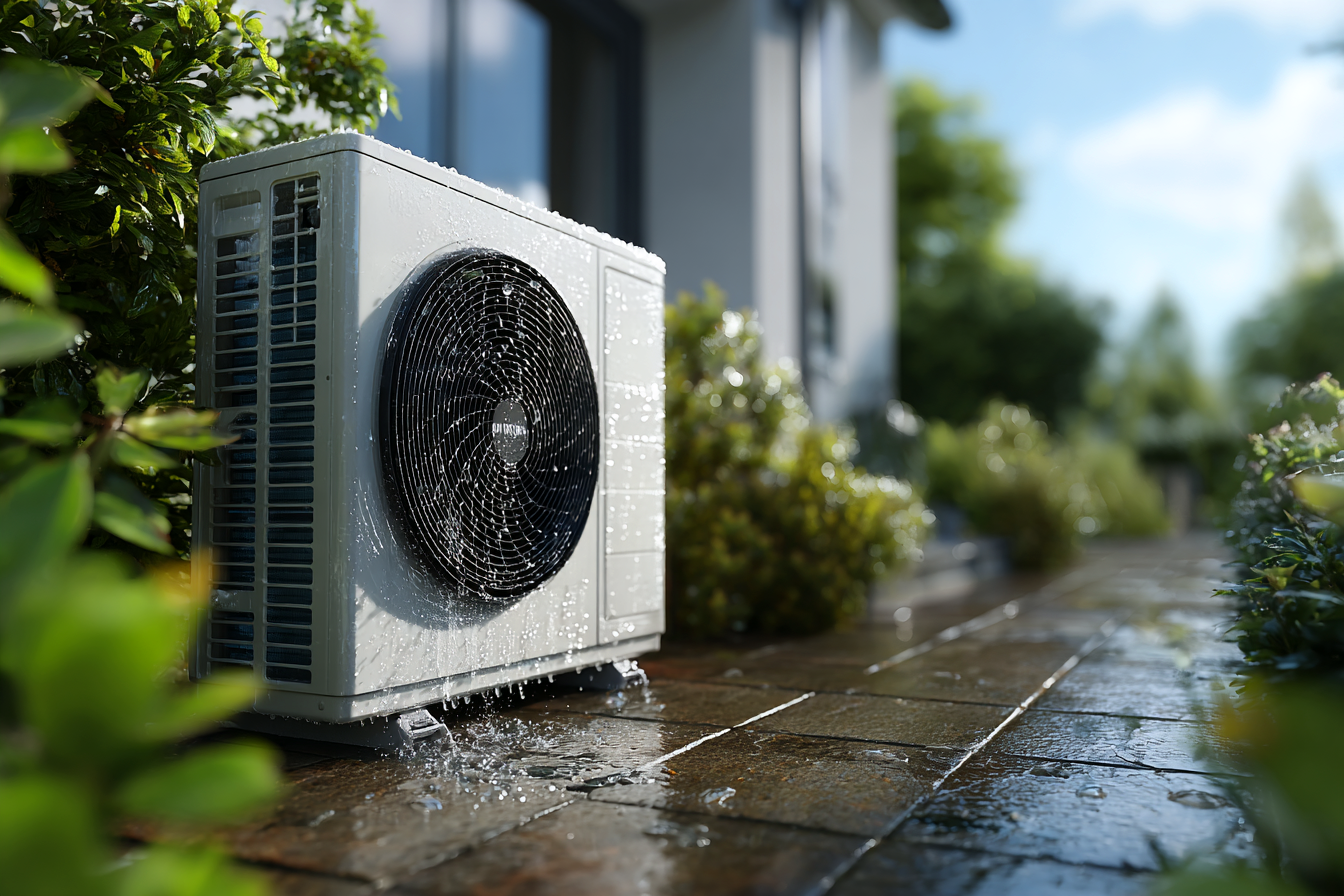HSPF vs COP: What Do These Heat Pump Efficiency Ratings Mean for Canadians

Written by Solenery
2 min read
HSPF vs COP, two key heat pump efficiency ratings every Canadian homeowner should understand. If you’re shopping for a heat pump in Canada, you’ll quickly run into these technical terms and might wonder: what do they actually mean, and how do they impact your energy bills in a freezing February?
Understanding these efficiency ratings is key to making a smart investment.
Whether you live in Winnipeg, Halifax, or Calgary, choosing the right heat pump for your climate can mean better comfort, lower emissions, and thousands in lifetime savings.
This guide unpacks the two most important performance metrics for heat pumps, COP (Coefficient of Performance) and HSPF (Heating Seasonal Performance Factor) and explains them in simple terms with real Canadian context.
What Is COP and Why It Matters in Cold Climates
COP = Heat Output ÷ Electricity Input
The Coefficient of Performance (COP) tells you how efficiently a heat pump converts electricity into heat.
For example, a COP of 3.0 means the system delivers 3 units of heat for every 1 unit of electricity consumed.
Cold Climate Note:
In Canadian winters, outdoor temperatures can drop to –25°C or lower.
High-efficiency cold-climate heat pumps are engineered to maintain a COP of 1.8–2.5 even in deep cold, far more efficient than baseboard heaters (COP = 1.0) or gas furnaces (~0.8–0.95 thermal efficiency).
Practical Example:
A Mitsubishi Zuba system in Montreal may show a COP of 3.5 at +7°C, and still perform at COP 2.0 at –20°C.
That translates to big savings on winter heating bills.
Read more: Can a Heat Pump Replace a Furnace in Canada? Here’s When It Can
What Is HSPF and How It’s Different from COP
HSPF = Seasonal Heating Output ÷ Electricity Used Over the Season
While COP is a snapshot at a specific temperature, HSPF (Heating Seasonal Performance Factor) reflects the heat pump’s average efficiency over the entire heating season.
It’s usually rated over a range of outdoor conditions and reported in BTU per watt-hour.
Canadian Tip:
In Canada, you want an HSPF of at least 8.5, and ideally over 10 for best results.
ENERGY STAR® cold climate-certified heat pumps must meet a minimum HSPF of 10 in Canada.
Quick Comparison Table:
| Efficiency Metric | What It Measures | Best For |
|---|---|---|
| COP | Instantaneous heating efficiency | Comparing performance at specific temperatures |
| HSPF | Average seasonal heating efficiency | Choosing the best year-round performer |
Why HSPF vs COP Ratings Matter for Rebates and Comfort
Efficiency = Eligibility
Both federal and provincial rebate programs in Canada require minimum COP and HSPF values.
For example:
To qualify for the Canada Greener Homes Grant, your heat pump must meet ENERGY STAR cold-climate criteria (HSPF ≥ 10, COP ≥ 1.8 at –8.3°C).
BC CleanBC, Ontario HER+, and Quebec Chauffez Vert all follow similar standards.
Better Comfort, Lower Bills
A higher HSPF system maintains better comfort in shoulder seasons and deep winter.
You’ll also use less electricity for every degree of warmth — especially helpful in TOU pricing zones like Ontario and BC.
Cost Tip:
A more efficient unit may cost $500–$1,500 more upfront, but can save $200–$500/year in heating costs, depending on your region and old system.
Read more: Your Guide to Federal Clean Energy Incentives in Canada (2025)
Best Canadian Heat Pump Picks: HSPF vs COP Performance
Here are a few popular models that meet Canadian standards and maximize rebates:
| Model | COP (at –8.3°C) | HSPF | Notes |
|---|---|---|---|
| Mitsubishi Zuba Central | ~2.5 | 11+ | Excellent for full-home retrofits |
| Daikin Aurora | ~2.3 | 10.3 | Reliable in multi-zone ductless setups |
| Fujitsu Halcyon XLTH | ~2.2 | 11.5 | Great for compact homes |
| Bosch IDS 2.0 | ~2.0 | 10.5 | Compatible with hybrid systems |
Pro Tip:
Always ask for manufacturer datasheets with full efficiency specs — especially COP values at –8.3°C or colder, which are most relevant for Canada.
Conclusion
Choosing a heat pump isn’t just about brand or price; it’s about understanding efficiency ratings. When you compare HSPF vs COP, you’re looking at the key factors that determine comfort, performance, and long-term costs. By prioritizing the right balance of both, Canadian homeowners can select a system that thrives in harsh winters while unlocking maximum rebates and savings.